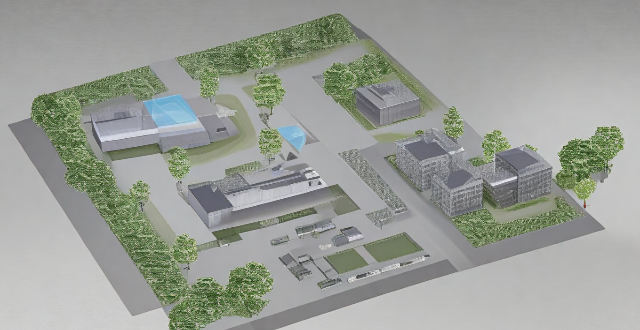Technology can significantly enhance our climate adaptation efforts by improving data collection, risk assessment, infrastructure development, community engagement, and research innovation. Utilizing advanced sensor networks, satellite imagery, GIS mapping, AI, smart grids, green building technologies, digital platforms, VR/AR, collaborative platforms, and automation can lead to more accurate predictions, efficient resource management, and resilient societies.

How Can We Use Technology to Enhance Our Climate Adaptation Efforts?
Technology has the potential to revolutionize how we approach climate adaptation. By leveraging innovative tools and systems, we can better understand the impacts of climate change, develop effective strategies for mitigation, and implement sustainable solutions that reduce our vulnerability to environmental shifts. Here's a detailed exploration of how technology can enhance our climate adaptation efforts:
Data Collection and Analysis
Advanced Sensor Networks
- Precision Agriculture: Implementing sensor networks in farming allows for precise irrigation and fertilization, reducing water usage and chemical runoff.
- Weather Forecasting: Improved meteorological sensors provide more accurate weather predictions, helping communities prepare for extreme events.
Satellite Imagery
- Deforestation Monitoring: Satellites track deforestation rates, aiding in reforestation efforts and biodiversity preservation.
- Climate Modeling: High-resolution images contribute to more accurate climate models, predicting future changes with greater precision.
Risk Assessment and Planning
GIS Mapping
- Flood Zone Identification: Geographic Information Systems (GIS) help identify areas at risk of flooding, guiding urban planning and infrastructure development.
- Wildfire Spread Simulation: Mapping software simulates wildfire spread based on vegetation, topography, and weather patterns to inform firefighting strategies.
AI and Machine Learning
- Disaster Response Optimization: AI algorithms analyze disaster data to optimize rescue routes and resource allocation during emergencies.
- Infrastructure Resilience: Machine learning models predict which structures are most vulnerable to climate stressors, guiding reinforcement efforts.
Sustainable Infrastructure Development
Smart Grids
- Renewable Energy Integration: Smart grids facilitate the integration of wind and solar power into energy systems, reducing fossil fuel reliance.
- Demand Response Management: They enable efficient electricity distribution by adjusting supply based on real-time demand, conserving resources.
Green Building Technologies
- Energy-Efficient Designs: Buildings incorporating smart designs use less energy for heating, cooling, and lighting.
- Water Recycling Systems: Advanced recycling technologies reduce water consumption in buildings, making them more resilient to droughts.
Community Engagement and Education
Digital Platforms for Awareness
- Climate Change Education: Online platforms offer educational content about climate change impacts and adaptation strategies.
- Citizen Science Projects: Engaging the public in data collection through apps and websites fosters awareness and participation in climate action.
Virtual Reality (VR) and Augmented Reality (AR)
- Simulated Experiences: VR experiences immerse users in potential future climate scenarios, heightening awareness and empathy.
- Interactive Learning Tools: AR applications turn any space into an interactive learning environment about climate science and adaptation techniques.
Research and Innovation
Collaborative Platforms
- Open Source Software: Sharing climate modeling software promotes international collaboration and faster innovation.
- Crowdsourcing Solutions: Online challenges encourage widespread brainstorming for new adaptation ideas.
Automation and Robotics
- Automated Data Collection: Drones and autonomous vehicles collect ecological data with minimal human intervention, increasing efficiency.
- Robotic Interventions: Robots can perform tasks like planting trees or cleaning up oil spills, reducing human risk in hazardous environments.
By integrating these technological advancements into our climate adaptation strategies, we can create more resilient societies capable of withstanding the challenges brought on by a changing climate. It's imperative that research, funding, and policymaking keep pace with technological progress to ensure these tools reach their full potential in protecting our planet.